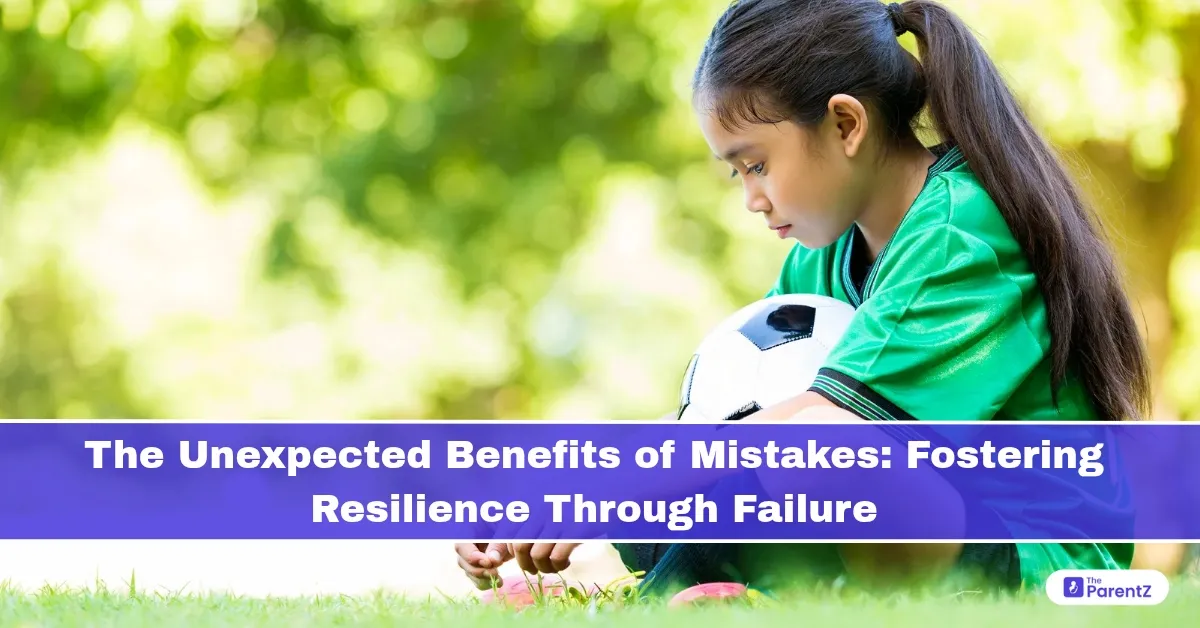Introduction
In a world obsessed with perfection and polished outcomes, we often treat mistakes as something to hide, avoid, or erase. Yet for children—and even for adults—mistakes are among the most powerful teachers. Rather than viewing failure as a sign of weakness, what if we saw it as the doorway to growth, learning, and emotional resilience?
Raising resilient children means allowing them to stumble, fall, and rise again—stronger, wiser, and more self-aware. This article explores how mistakes shape emotional strength and how parents can help children embrace failure with courage and confidence.
Why We Fear Mistakes
From an early age, children are taught to strive for the right answer, the perfect score, the winning outcome. While ambition is healthy, an overemphasis on success can create a fear of failure that stifles learning and creativity.
Common Cultural Messages Around Mistakes:
- “If you mess up, you’re not good enough.”
- “Only the best succeed.”
- “There’s no room for second chances.”
These beliefs can lead to anxiety, perfectionism, and a reluctance to try new things—especially if failure is treated as something shameful or disappointing.
The Role of Mistakes in Building Resilience
Resilience isn’t just about bouncing back—it’s about learning from setbacks and building the emotional tools to face life’s unpredictability. And that process often begins with failure.
What Kids Learn Through Mistakes:
1. Adaptability
Making a mistake forces a child to rethink, re-evaluate, and adjust. This builds problem-solving skills and mental flexibility.
2. Self-Awareness
Errors offer a mirror into one's strengths and weaknesses. Children begin to understand how they respond under pressure, frustration, or disappointment.
3. Empathy
When children see that everyone makes mistakes—including parents, teachers, and peers—they become more forgiving and understanding of others.
4. Courage to Try Again
Failure builds emotional stamina. The more a child learns to fail and keep going, the braver they become in taking healthy risks.
How Parents Can Help Kids Embrace Mistakes
1. Model Mistake-Making
Be open about your own missteps. Share what went wrong, how you felt, and what you learned. This normalizes imperfection and shows that growth is always possible.
2. Focus on the Process, Not Just the Outcome
Instead of asking, “Did you win?” try “What did you learn?” or “What was challenging?” This shifts attention from perfection to progress.
3. Create a Safe Space for Errors
Avoid punishment or criticism for every mistake. Encourage curiosity and problem-solving by saying things like, “That didn’t work out—what could we try next?”
4. Celebrate Effort and Growth
Praise resilience, perseverance, and creativity. Let your child know their efforts are valued—even when the result isn't perfect.
5. Avoid Rescue Mode
It’s tempting to fix things for our children, but real resilience is built when they’re allowed to work through setbacks themselves—with your support nearby.
Turning Everyday Mistakes into Growth Moments
Examples:
- Spilling milk: Instead of scolding, say, “It’s okay. Let’s clean it up together.”
- A poor test grade: Encourage reflection—“What part was tricky? Do you want help reviewing it?”
- Falling out with a friend: Talk through the emotions and possible ways to rebuild trust or move forward.
Each of these becomes not just a mistake, but a valuable opportunity for emotional growth.
Conclusion
Mistakes aren't the opposite of success—they are a necessary part of it. When we shift our mindset—and our parenting—from punishment to perspective, we create room for resilience to flourish. Children who are allowed to fail without fear become adults who can handle life’s inevitable twists with grace, strength, and wisdom.
So the next time your child stumbles, don’t rush to fix it. Sit with them in the moment, help them see the lesson, and remind them: It's okay to fail. That’s how we grow.








Be the first one to comment on this story.